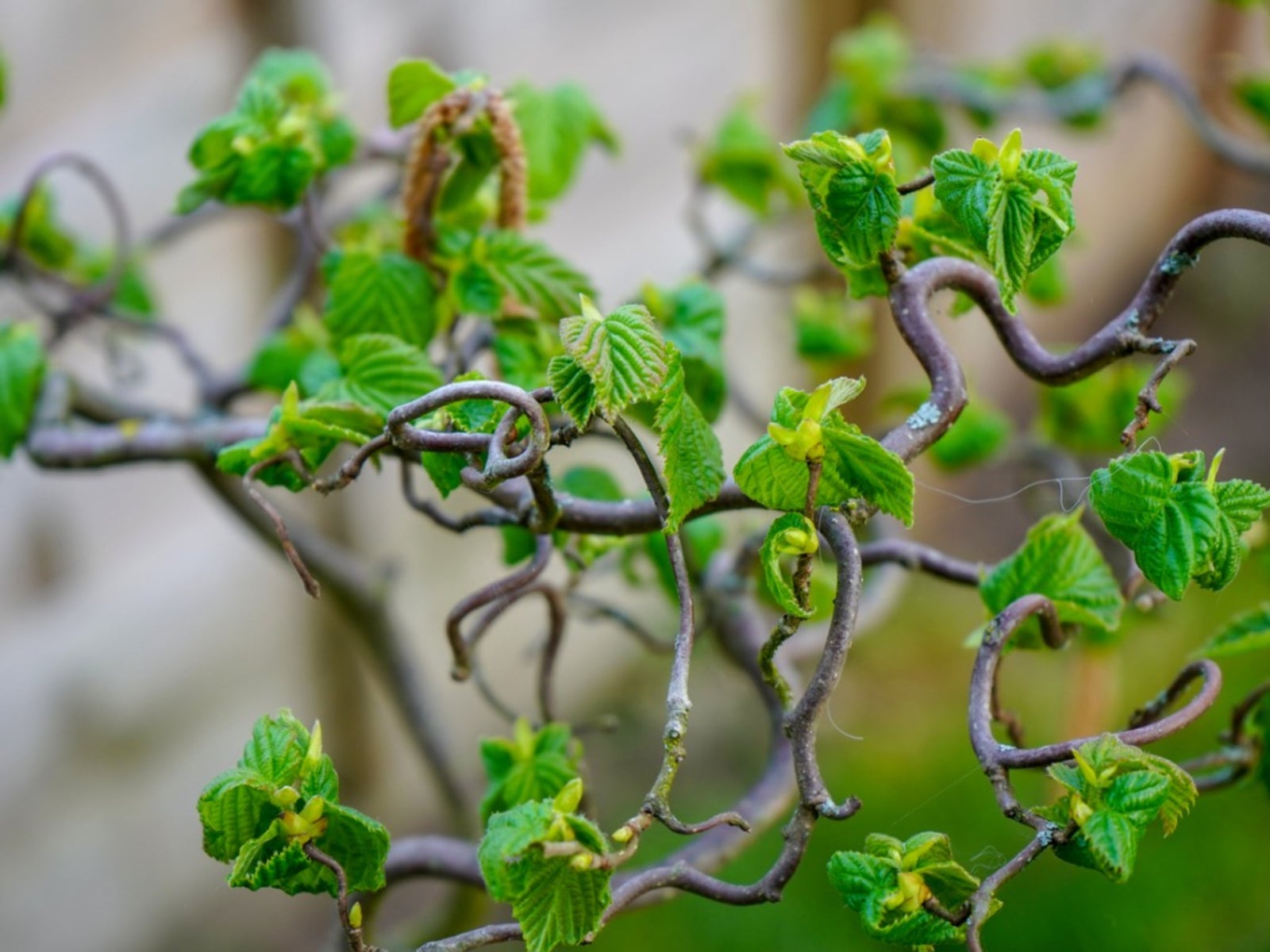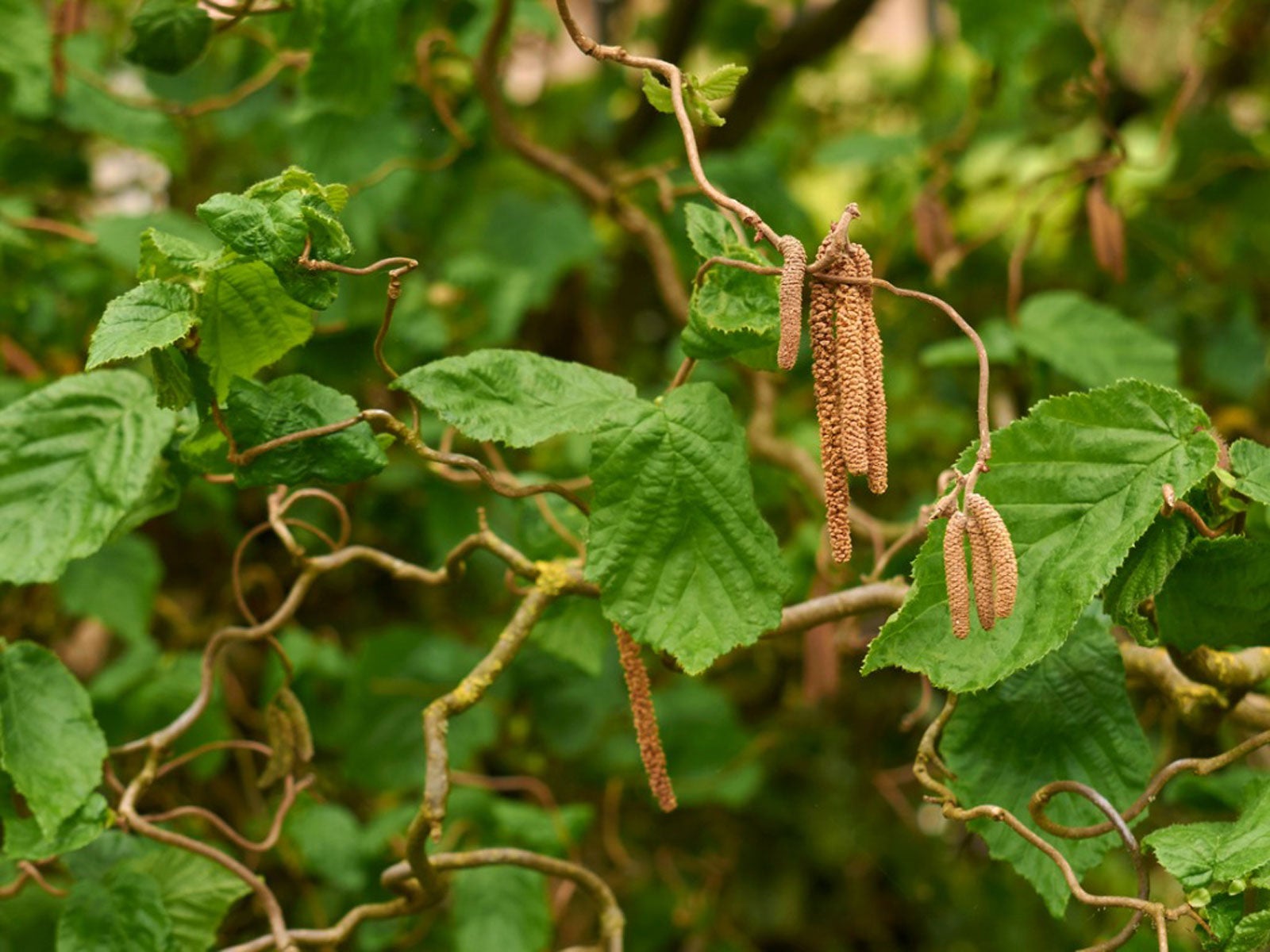Trimming Corkscrew Hazelnuts: How To Prune A Contorted Hazelnut Tree


Contorted hazelnut, also called corkscrew hazelnut, is a shrub that doesn’t have many straight branches. It is known and loved for its twisting, spiral-like stems. If you want to start pruning a corkscrew hazelnut, you can turn the one-of-a-kind specimen plant into a little tree. Read on for information on trimming corkscrew hazelnuts, including tips on how to prune a contorted hazelnut.
Contorted Hazelnut Pruning
Corkscrew hazelnut (Corylus avellana) is a shrub that is grown as an unusual ornamental. It is prized for its characteristically twisted stems and leaves. It also produces attractive yellow catkins. Leave the plant to mature with its natural growth habit for a unique specimen plant with completely twisted branches. If you want to grow one of these hazelnuts as a small tree, contorted hazelnut pruning is required.
Trimming Corkscrew Hazelnuts
If you are interested in trimming corkscrew hazelnuts, be sure to do so at the correct time. Pruning a corkscrew hazelnut is best accomplished in winter or early spring while the plant is dormant. Ideally, it should be just before new growth starts. The only tool you need for contorted hazelnut pruning is garden pruners. You also might want to have a pair of garden gloves handy.
How to Prune a Contorted Hazelnut
If you are wondering how to prune a contorted hazelnut, it isn’t very difficult. The first step in trimming corkscrew hazelnuts is to remove about a third of the plant’s oldest stems. You can do this each year. Remove these stems by pruning them back to their parent branches. You should also prune inward growing stems back to outward facing buds. When the goal for pruning a corkscrew hazelnut is to shape it into a small tree, remove the lower lateral stems. Ideally, this trimming should be done the second year after planting. As time passes, remove any branches that do not contribute to your vision of the plant. During contorted hazelnut pruning, always check for suckers at the base of the shrub. Remove these suckers to prevent them from competing with the parent plant for soil nutrients and water.
Gardening tips, videos, info and more delivered right to your inbox!
Sign up for the Gardening Know How newsletter today and receive a free copy of our e-book "How to Grow Delicious Tomatoes".

Teo Spengler is a master gardener and a docent at the San Francisco Botanical Garden, where she hosts public tours. She has studied horticulture and written about nature, trees, plants, and gardening for more than two decades. Her extended family includes some 30 houseplants and hundreds of outdoor plants, including 250 trees, which are her main passion. Spengler currently splits her life between San Francisco and the French Basque Country, though she was raised in Alaska, giving her experience of gardening in a range of climates.
-
 Looking For Plants To Give You The Soft And Fuzzies? Try These 5 Fuzzy Leaf Plant Options
Looking For Plants To Give You The Soft And Fuzzies? Try These 5 Fuzzy Leaf Plant OptionsLovers of texture, drama, silver foliage and tactile plants will adore these special sensory garden additions. These fuzzy leaf plant options will leave you all aglow
By Susan Albert
-
 Get Ready For A Summer Of Hummers! Grow These Full Sun Hummingbird Plants and Flowers
Get Ready For A Summer Of Hummers! Grow These Full Sun Hummingbird Plants and FlowersIf you’re lucky enough to enjoy a sunny backyard, make sure you are maxing out on your pollinator opportunities and grow these full sun hummingbird plants and flowers
By Tonya Barnett
